Goula/Figuera's modular lights resemble geometric ink illustrations
Barcelona design studio Goula/Figuera has created a collection of hanging lights that are based on thousands of drawings.
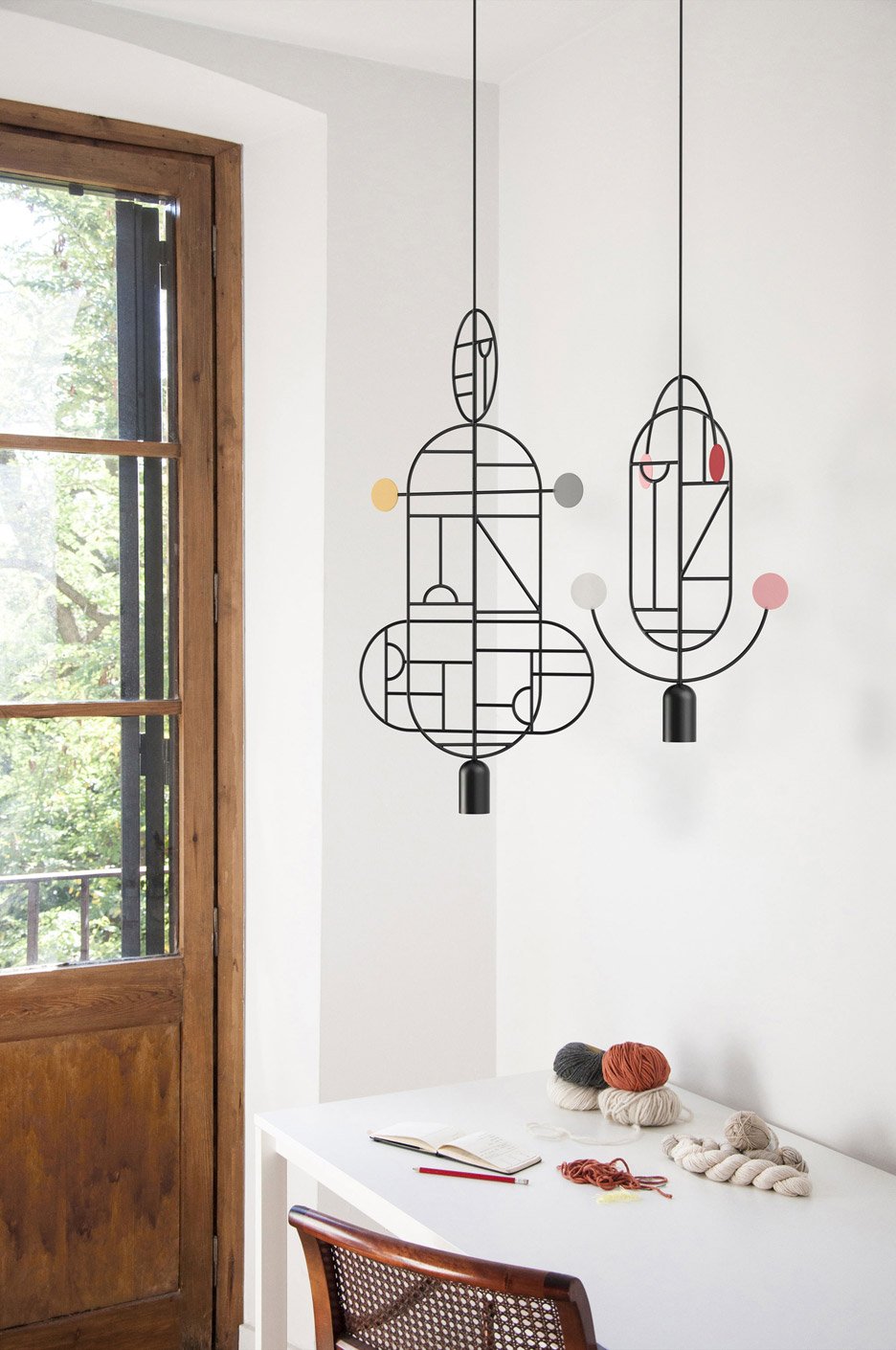
The Lines & Dots lamps were designed using initial sketches made from markings drawn by hand on paper. Eight drawings were selected and recreated using powder-coated steel rods, which were folded and welded by hand by local craftsmen.
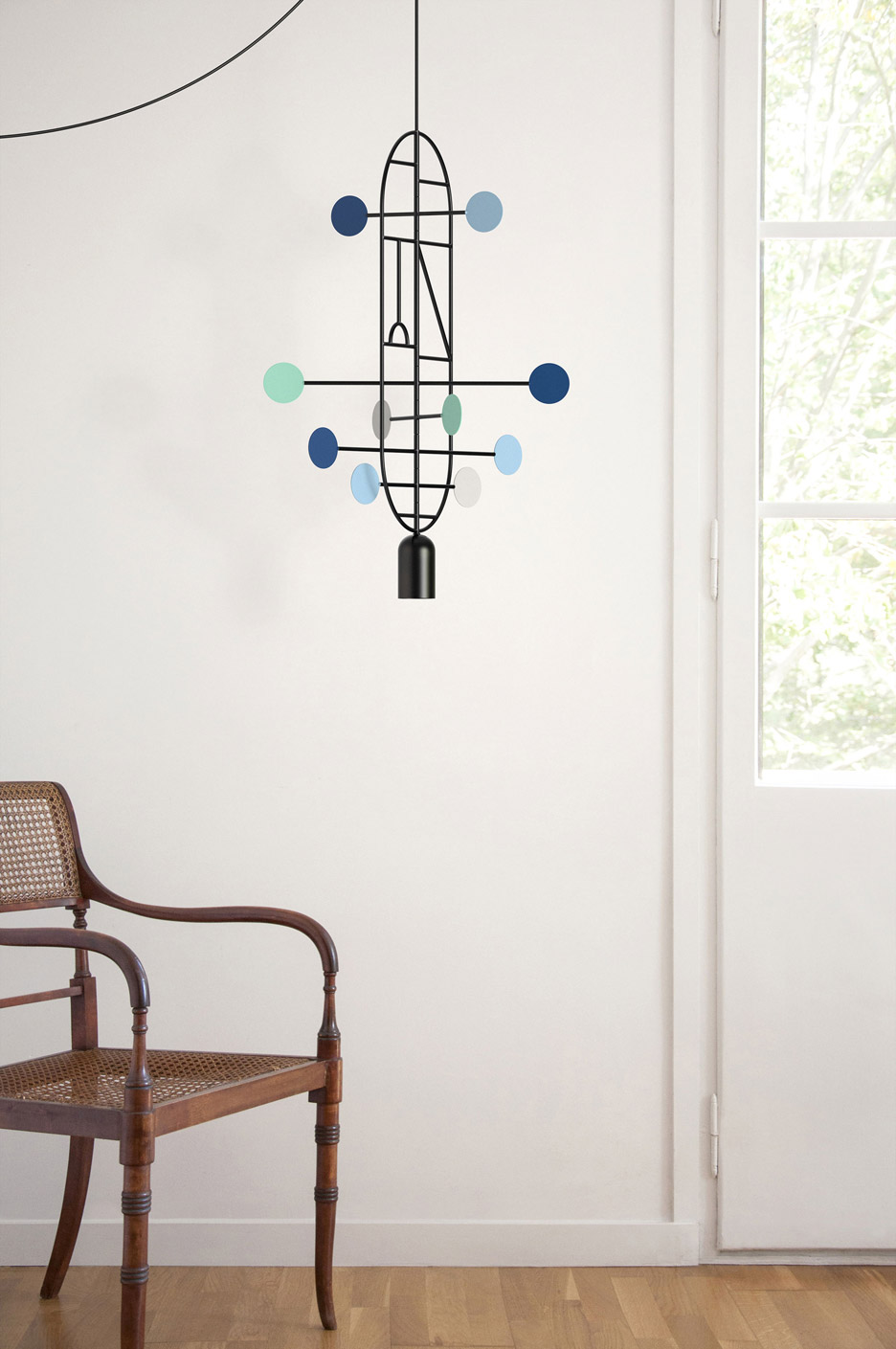
"We began with artistic drawings and tried to translate those 2D shapes into a volumetric object," the studio's Álvaro Goula told Dezeen. "We have to try different manufacturing techniques until we found the one."
"We finally decided to make them in welded steel, a material traditionally used in sculpture, which is extremely durable and transmits high quality."
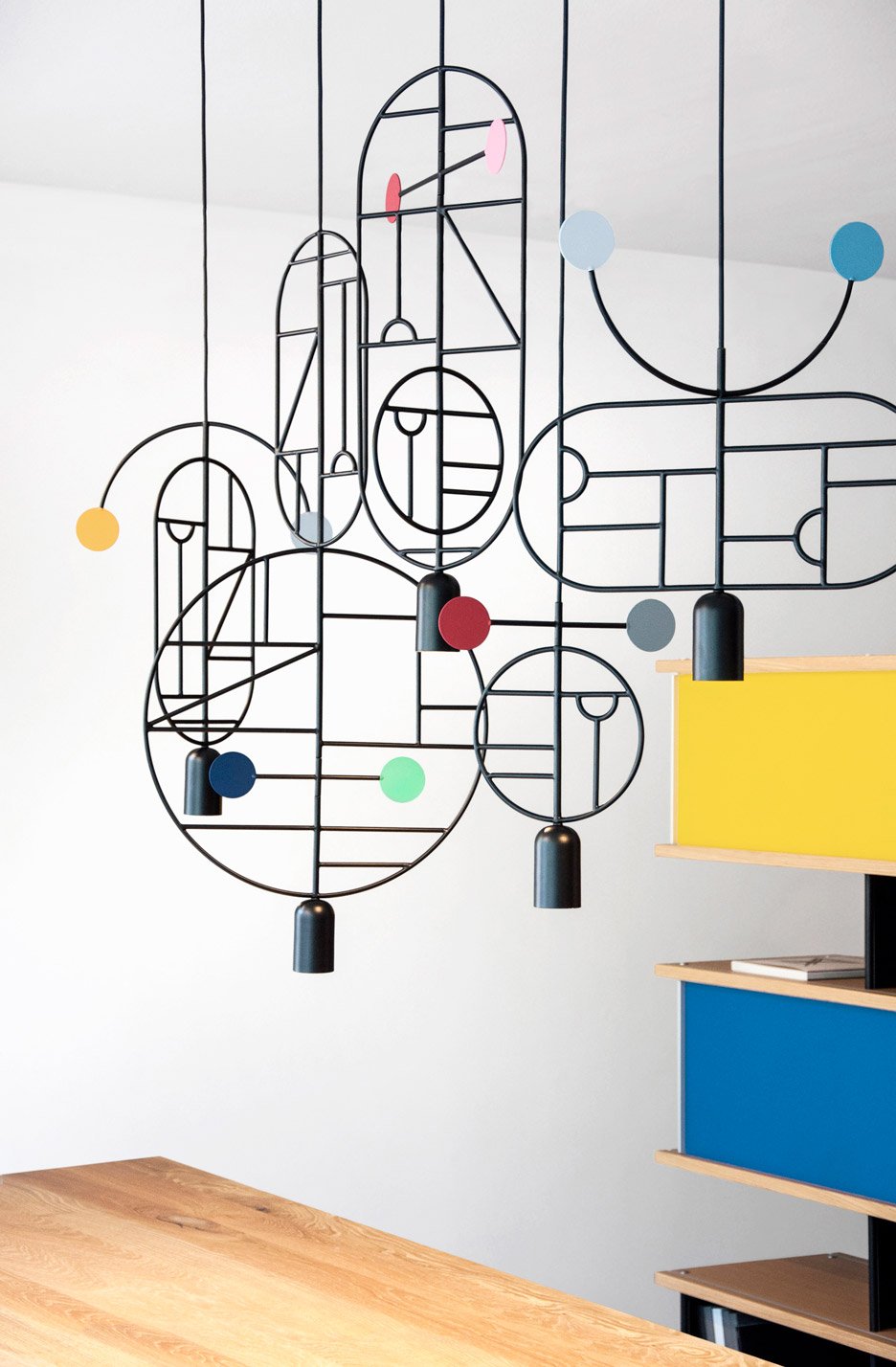
The lights feature a central hanging rod, with patterned circular and oval sections arranged around it.
More simple designs have only a single decorative panel, while others feature combinations of different shapes placed one on top of another.
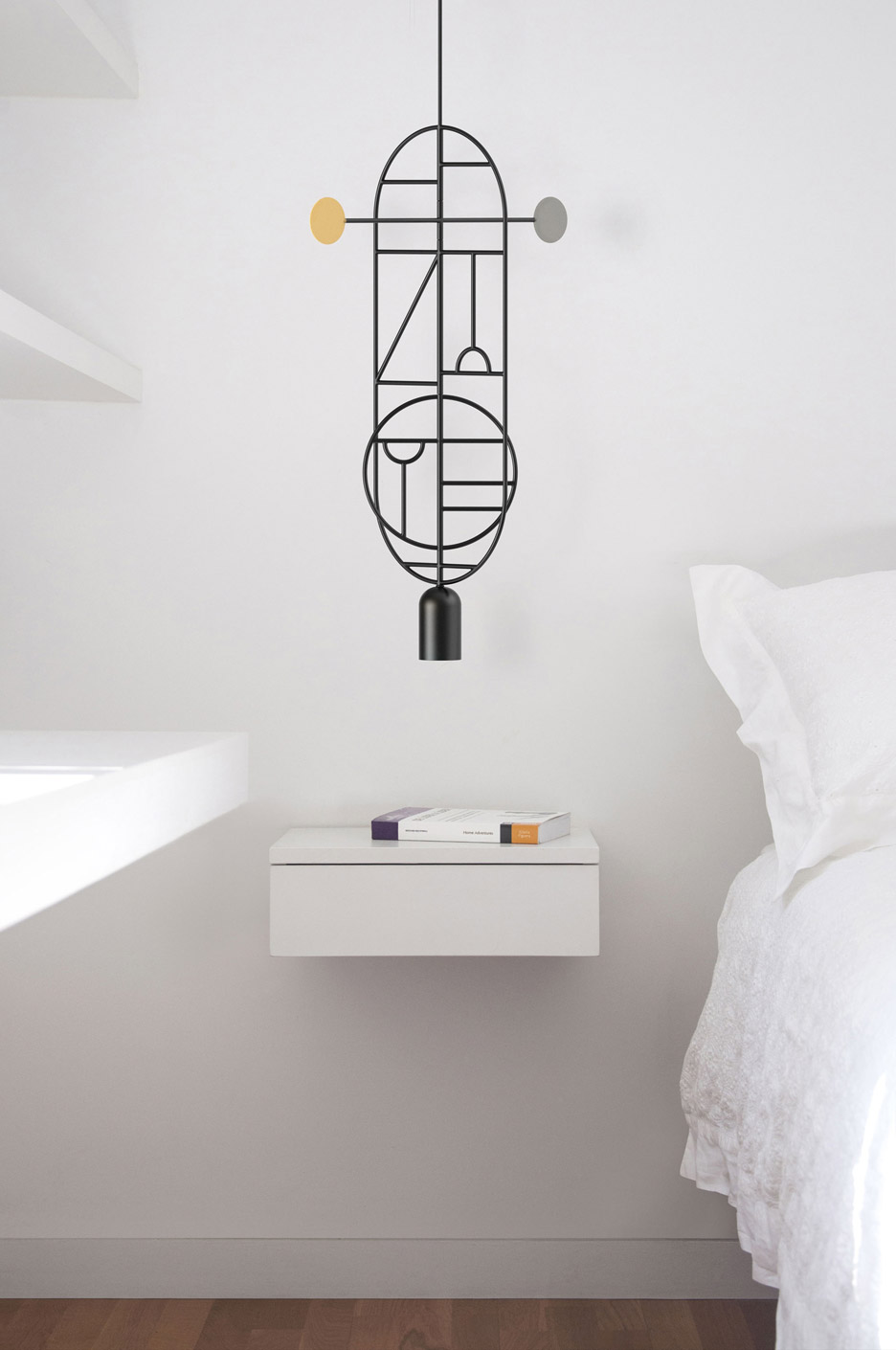
Brightly coloured dots adorn the ends of singular rods, and consumers can choose which colours they want when buying lights. The lamps can also be further customised on request, by selecting which sculptural pieces are combined together.
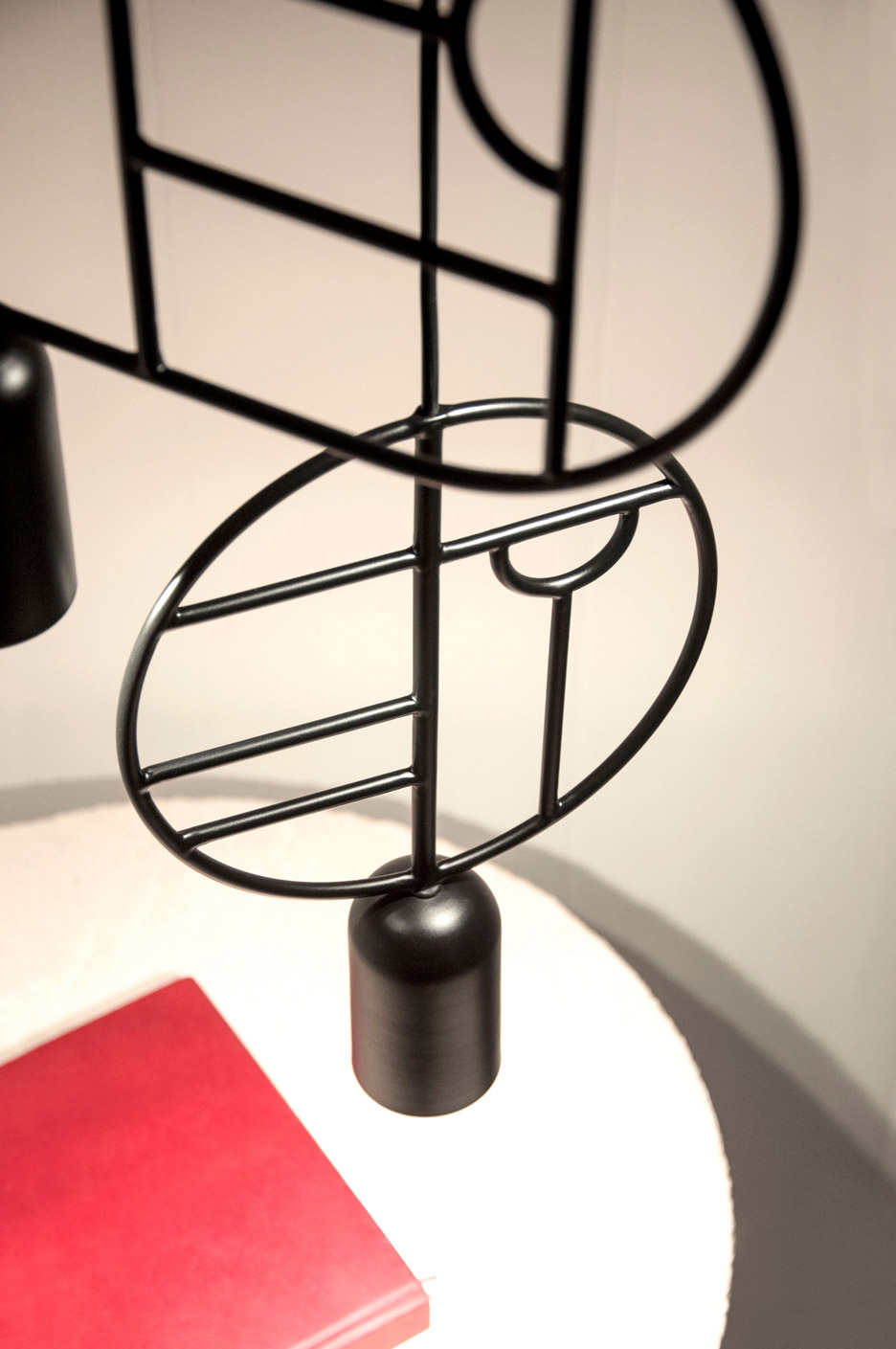
The differently shaped sections can rotate independently from one another, making the lights resemble a children's mobile when hung up.
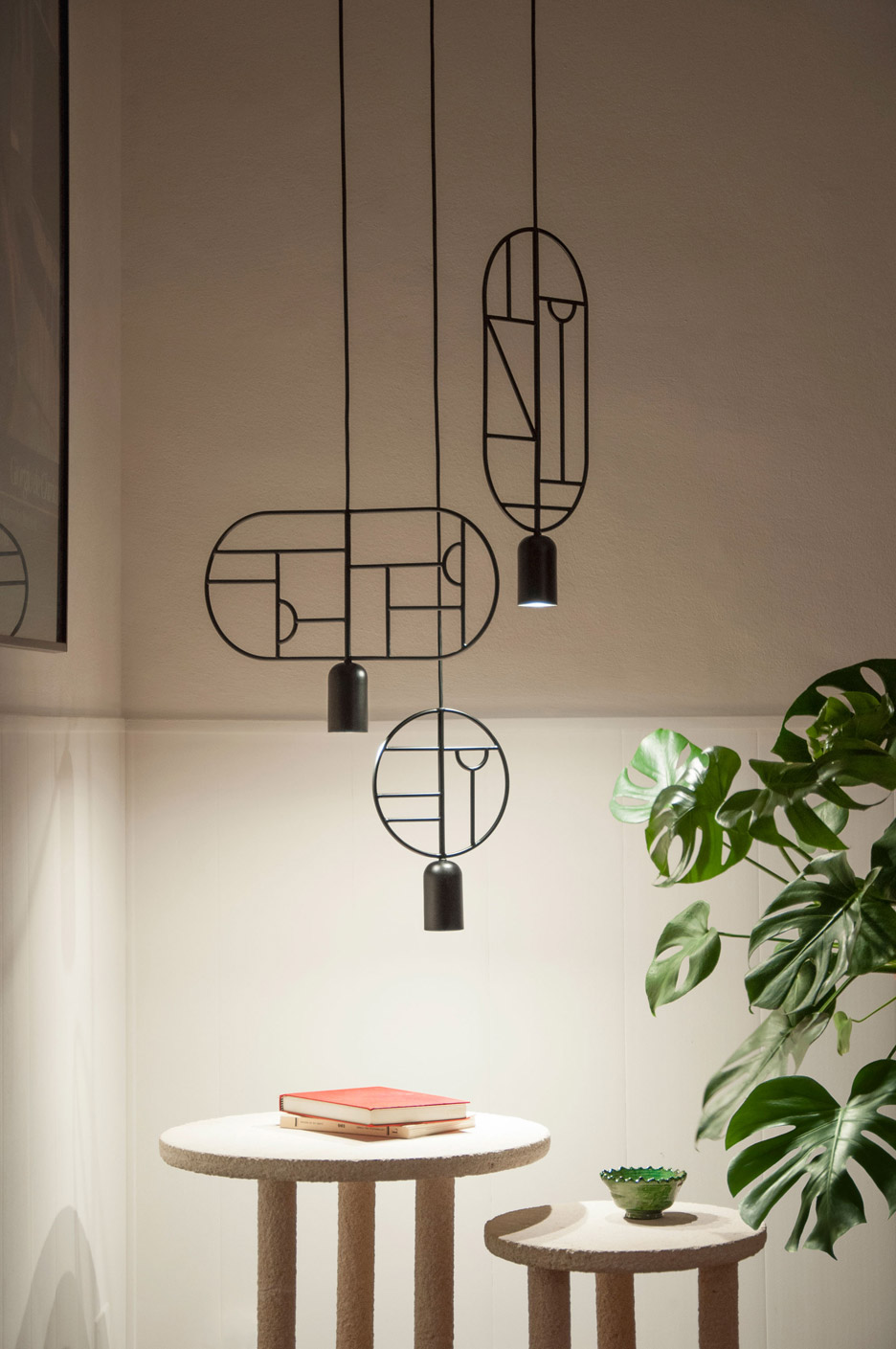
The Lines & Dots collection is being sold through Home Adventures – a new initiative set up by Goula/Figuera to launch more unusual homeware.
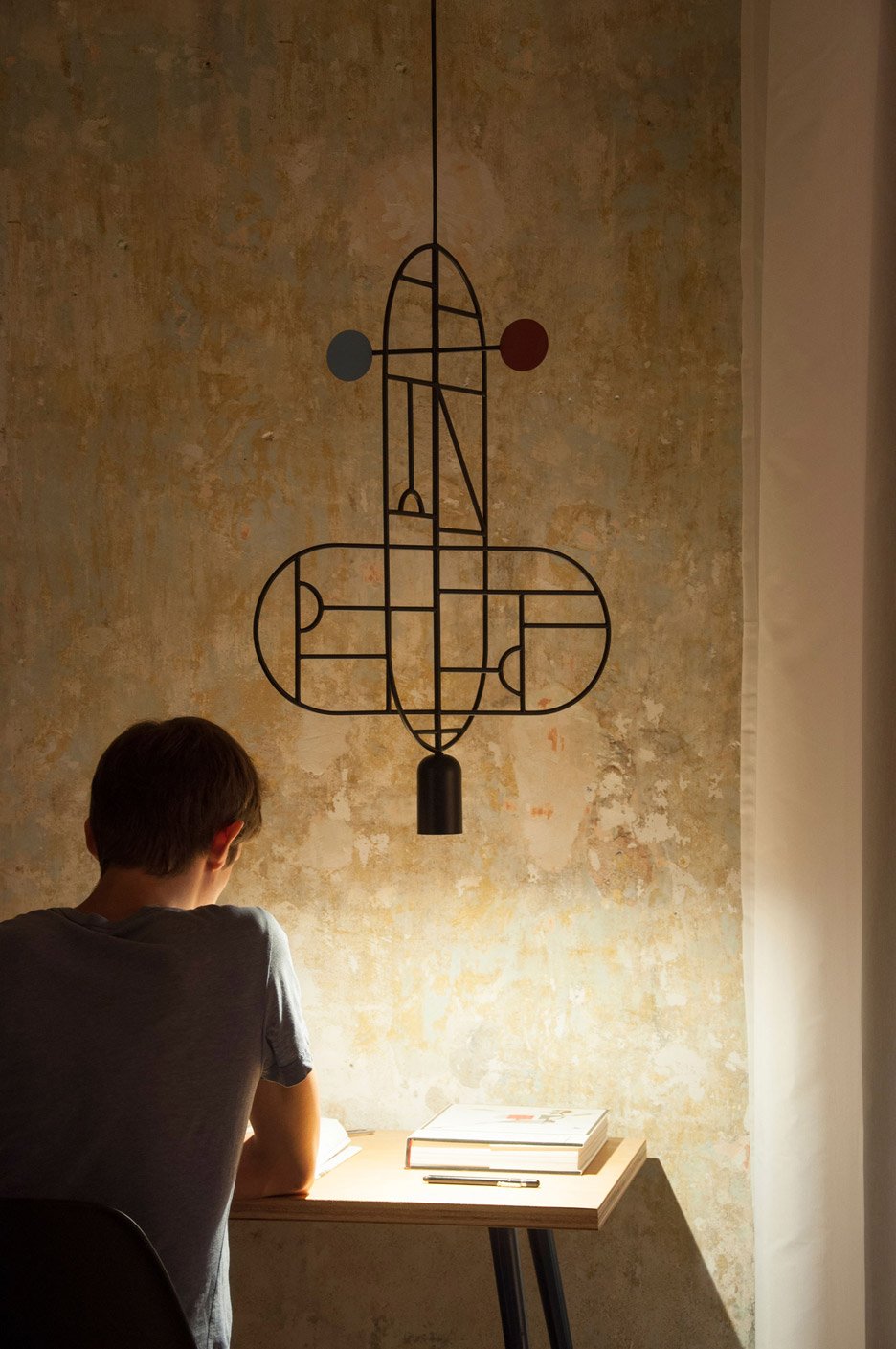
"Through this new brand, products are launched onto the market which due to their experimental nature, morphologic inspiration or innovative production, prove difficult to find in conventional home decor catalogues," the studio said.
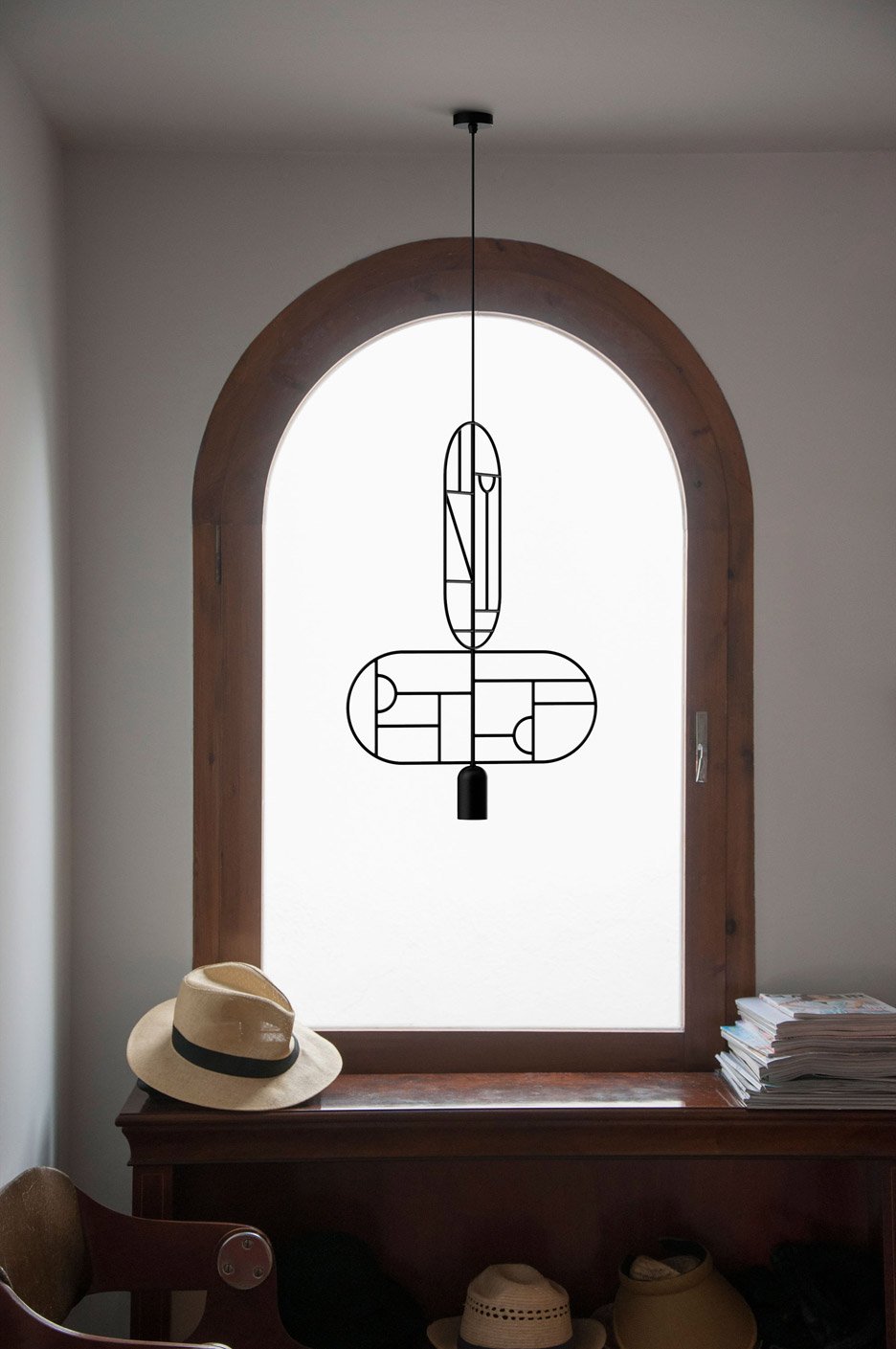
"Pieces which come to life from the freedom to combine volume and materials and which represent the sheer enjoyment of studio work," it added.
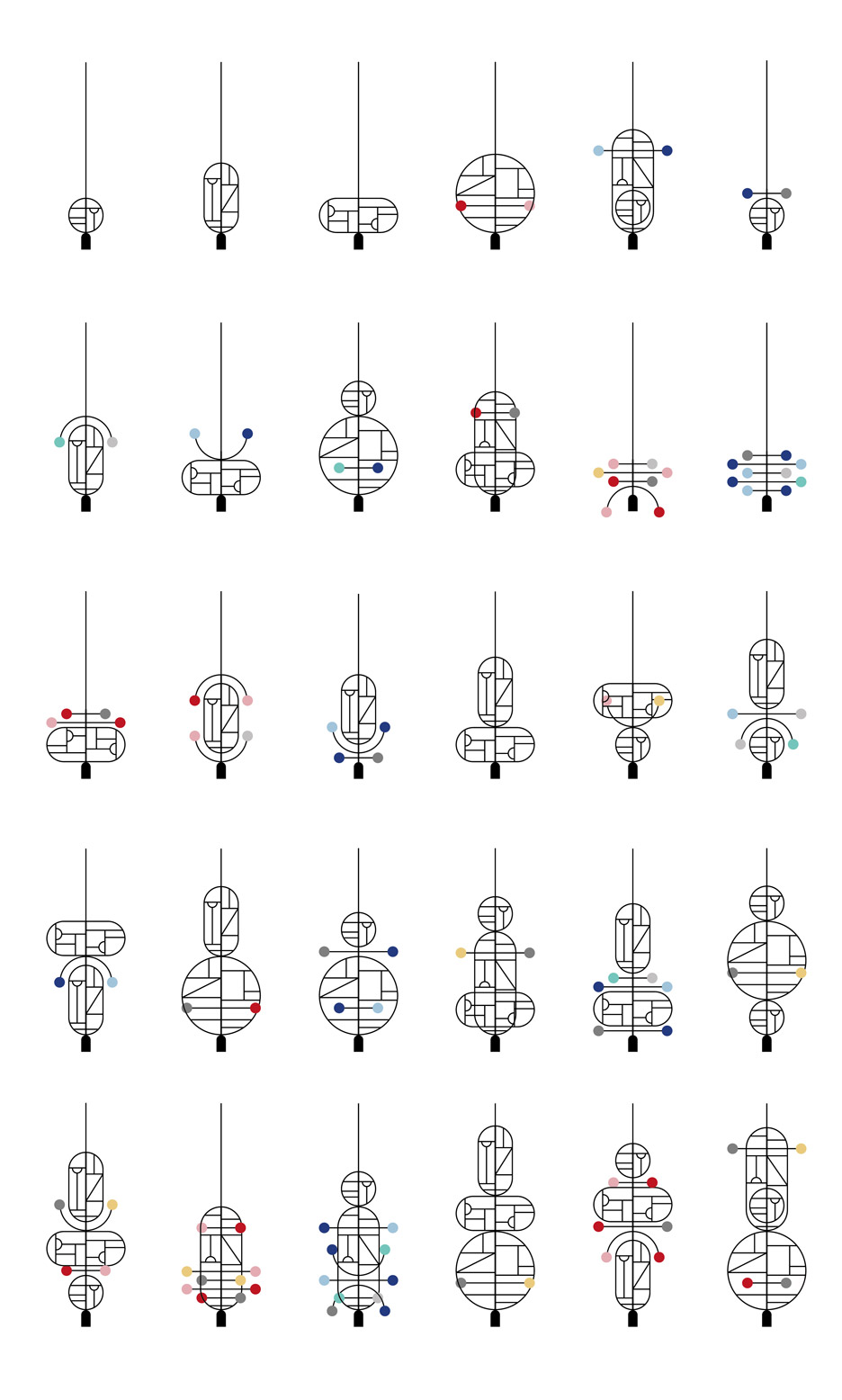
Austrian designer Thomas Feichtner also designed lighting that resembled a single line drawing, and Kazakh designer Nissa Kinzhalina created a pair of chairs that looked like incomplete sketches when viewed from the side.